28 November 2019
Image: Pamela J Spry AM, (centre-right) with her Royal Adelaide Hospital colleagues in the 1980s.
Can you imagine living at the same place you work and having to sign a register to report every time you leave and return to the building? What about donning your white uniform, black stockings and nurse’s hat to start your shift where you begin by helping to prepare morning tea for the hospital’s all-male team of doctors?
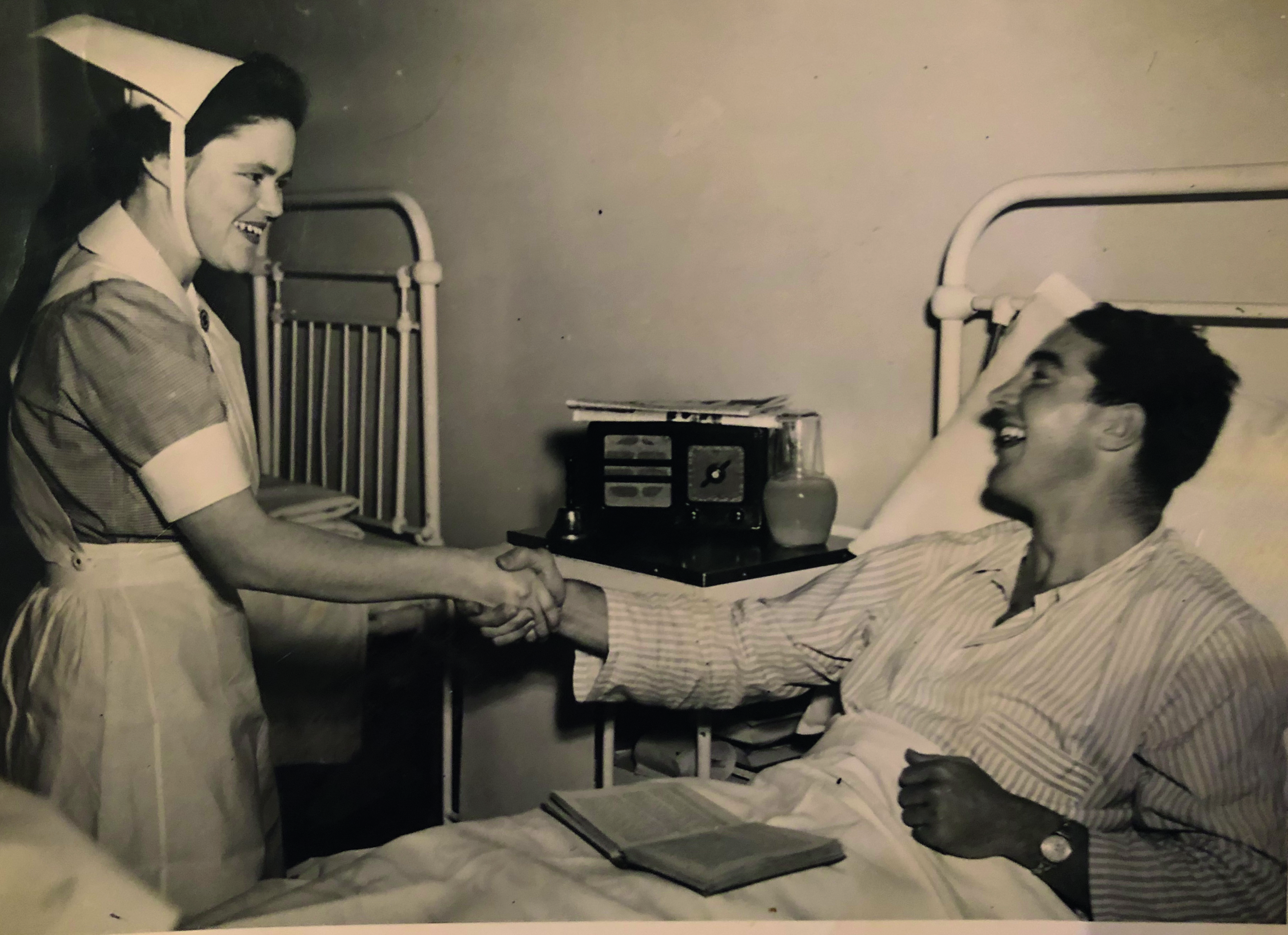 Pamela J. Spry AM in her early nursing days
Pamela J. Spry AM in her early nursing days
This was the reality for nurses in the early 1970s at the Royal Adelaide Hospital (RAH). But how times have changed, largely thanks to visionary nursing leaders like Pamela Spry AM.
As the RAH Director of Nursing for 11 years—much of them spent as the only woman among men at management level—Ms Spry was at the forefront of many significant changes for the profession and unwittingly also for feminism.
“When I became Director of Nursing in 1973, nurses were preparing an elaborate morning tea for the doctors in a separate tea room and doctors had their own dining room,” Ms Spry, now aged 94 says.
It was this type of occupational servitude and obvious separation of men and women on a hierarchical and gender basis that Ms Spry was intent on eliminating.
“Adelaide at this time was a very conservative place. I wanted to take the RAH in a more progressive direction. I wanted nurses to no longer be seen by anyone as ‘handmaidens’ to the doctors but to begin to become their equal.”
Marking the start of her ambitious agenda was her successful removal of the ‘shovel’ hats that female Registered Nurses had been required to wear for decades.
“I have a very clear memory of [one of the senior nurses] removing her hat and throwing it into the corner with glee. We all shared joy at this liberating act. Hats were a sign of occupational servitude and especially so for women.” (The black stockings would become optional after 1977).
One of her other ‘firsts’ was to throw away the register into which nurses had to sign out and sign back in by time left and time returned.
“I asked the receptionist for the Register which she duly gave me. I then threw it straight into the bin to her absolute horror and then calmly walked away. In my view nurses were now to be treated as trusted adults.”
But it would be Ms Spry’s involvement in advancing nursing through education that undoubtably had the greatest impact on the future of the profession.
“I saw a major part of my role as making it easier for nurses to be educated and to create the opportunities for this to occur. I wanted nurses to be exposed to different ways of thinking through education. I clearly understood that education would allow nurses to take on more responsibility.”
After a travelling fellowship in 1976 to the United States and United Kingdom, where she explored hospital and tertiary nurse training settings, Ms Spry returned with some big ideas.
“I introduced the very first scholarships for RAH Registered Nurses to undertake a ‘bridging course’ in the college system to transition from a certificate to a diploma qualification. This was at the Sturt College of Advanced Education that is now Flinders University.”
“I did this because I understood very clearly that any change to nursing had to come from within and could not be imposed. They would—and did—return with a different perspective.
“These nurses were then able to effect change from within, especially with their resistant nursing colleagues, making the ground even more fertile for change.”
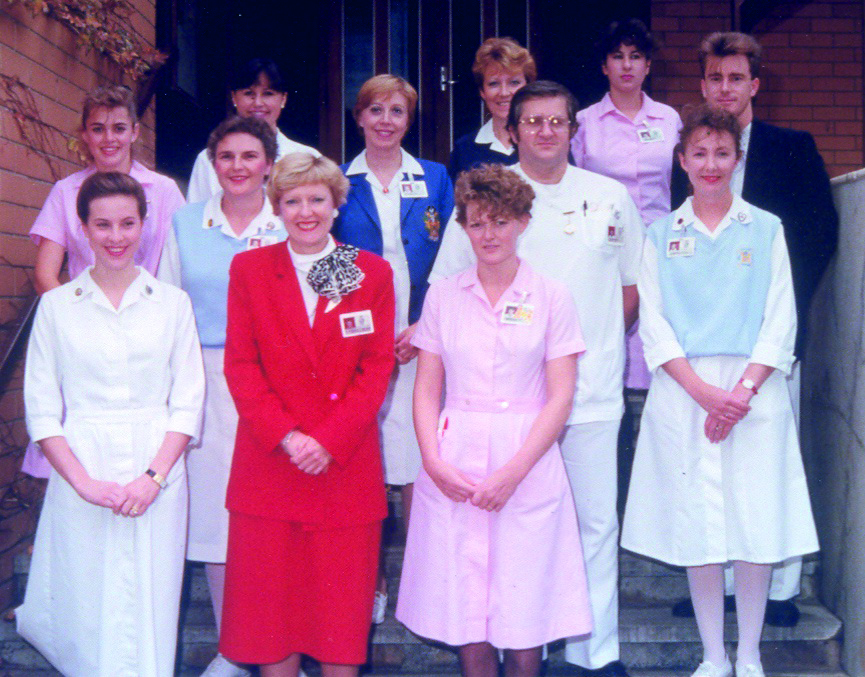 Dr Rosemary Bryant AO (in red) as Director of Nursing with her colleagues at the Royal Adelaide Hospital in 1990.
Dr Rosemary Bryant AO (in red) as Director of Nursing with her colleagues at the Royal Adelaide Hospital in 1990.
She says there was also considerable resistance by the doctors, but “as time progressed it was somewhat ironic to see many of these same doctors encourage their daughters to undertake nursing in the college system.”
To help to further empower her nursing staff, Ms Spry brought an experienced ‘nursing change agent’ over from the US to host education sessions for staff.
“This was not only about college education, but I also wanted to encourage and teach nurses to think for themselves more about nursing practice and not to rely so much on doctors/medical practitioners (who were overwhelmingly male).”
“I wanted nurses to shrug off the patriarchal model and to embrace their own nursing model of care, separate from but collaborative with a medical model. Nurses had their own distinct knowledge and skills for which they needed and deserved more recognition.”
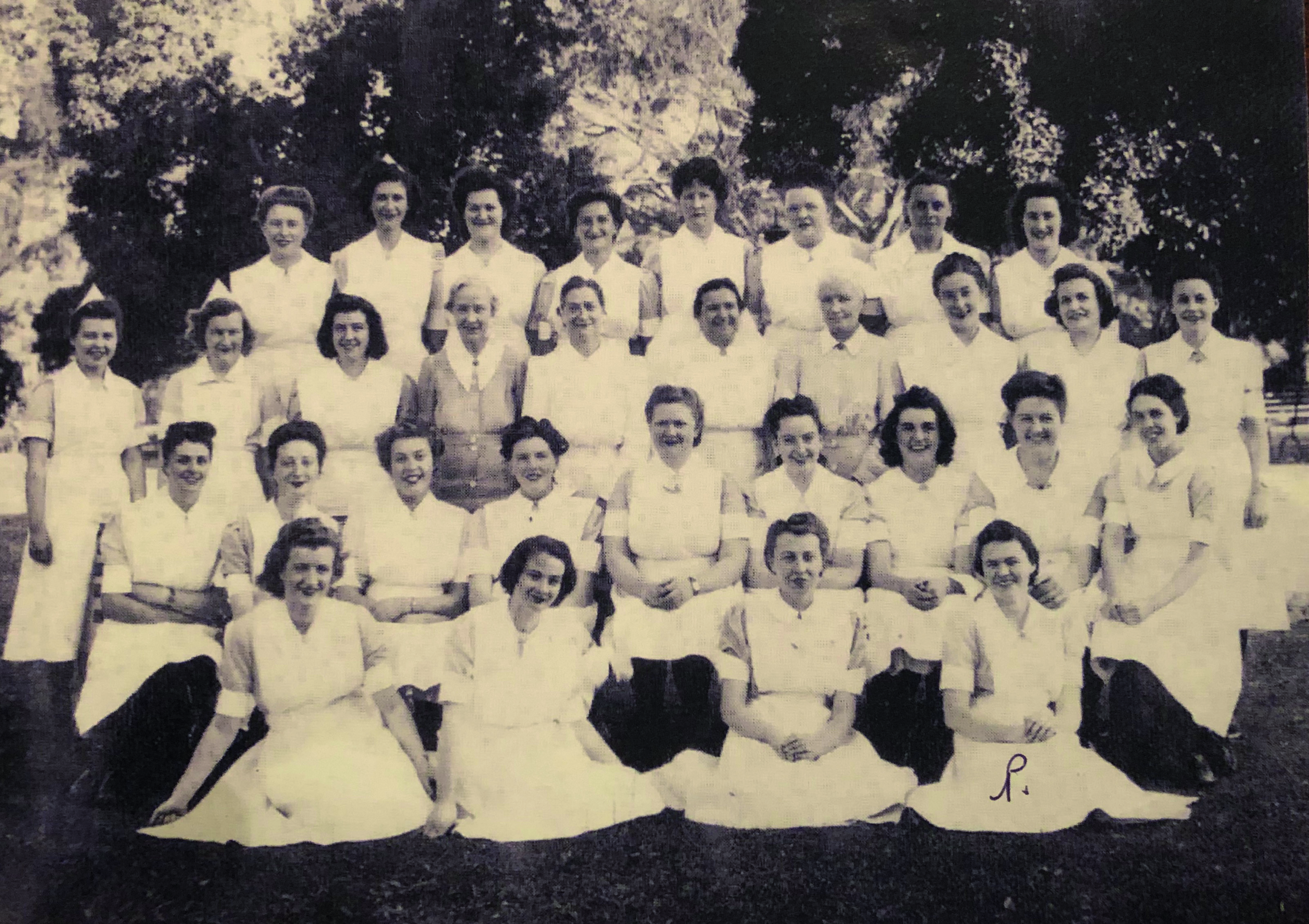 Pamela J Spry AM (front right) on her hospital training graduation day.
Pamela J Spry AM (front right) on her hospital training graduation day.
Formalising those specific skills in education delivered by the tertiary sector would go on to change the face of nursing, but it was an achievement Ms Spry says was only accomplished after “a long, hard battle.”
“We literally went from one battle to another, and I was involved in all of them.”
Also involved in the campaign to advance nursing education was another visionary nursing leader, Dr Rosemary Bryant AO, who took over from Ms Spry as RAH Director of Nursing in 1984 and went on to become Australia’s first Commonwealth Chief Nurse and Midwifery Officer in 2008.
“The campaign to transfer nursing education was long and hard, waged during and between elections. Success was finally achieved nationally on 24 August 1984 when in-principle support was given for the full transfer nationally,” Dr Bryant says.
She says the achievement “first and foremost, showed that we have a tradition of formidable leaders in nursing and midwifery.”
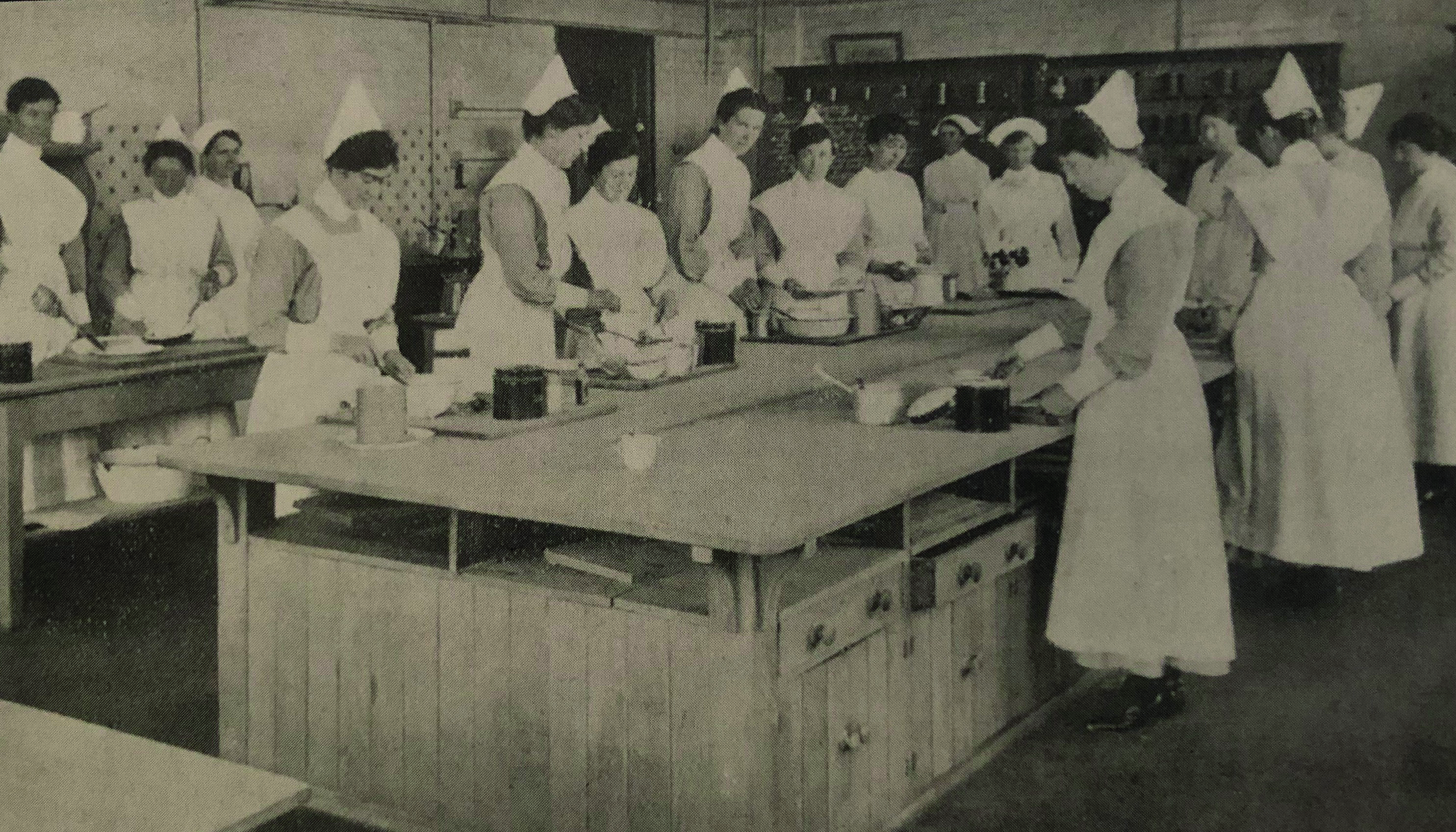 Nurses preparing food for patients.
Nurses preparing food for patients.
“It also showed that determination, hard work and consistent messages are required if a vision is to be realised. This campaign took the better part of 11 years with elections coming and going and powerful forces opposing us.”
While the programs were established at diploma level, the end goal was bachelor level.
“Another battle ensued and this time the goal was accomplished fairly quickly along with other changes to higher education. Thus, we were on the way to educational parity with other health professionals at an early stage which was to stand us in good stead down the track. I am referring here to the National Registration and Accreditation Scheme where nurses and midwives are on an equal footing with other health professionals. I think our status would have been different had we not required a bachelor’s degree as the basic qualification.”
She says postgraduate programs gradually followed to the point today where we have large faculties of nursing and midwifery with a wide range of offerings.
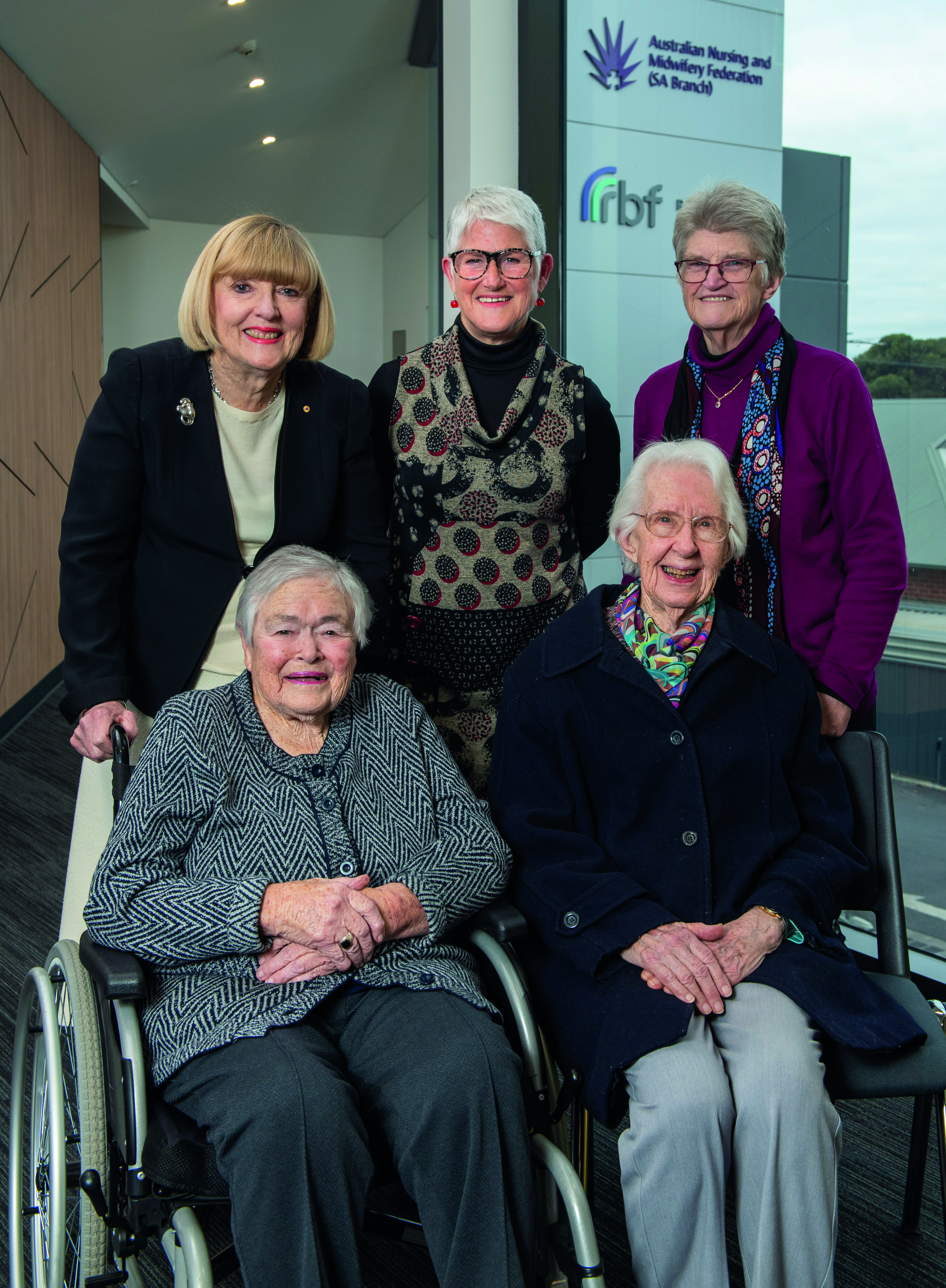 Back Row: Dr Rosemary Bryant AO, Carol Gaston AM, Christine Cornwell, Front Row: Pamela J Spry AM, Dr Joan Durdin AM gathered at 2019 ANMF (SA Branch) Professional Conference for the premiere of the ‘Visionaries’ short film documenting the history of nursing and midwifery in SA.
Back Row: Dr Rosemary Bryant AO, Carol Gaston AM, Christine Cornwell, Front Row: Pamela J Spry AM, Dr Joan Durdin AM gathered at 2019 ANMF (SA Branch) Professional Conference for the premiere of the ‘Visionaries’ short film documenting the history of nursing and midwifery in SA.
“These momentous changes to nursing education inevitably opened opportunities for nurses and midwives to expand their roles.”
“It is my view that the transfer of nursing education into the mainstream and into universities is the most critical factor in our development in my lifetime.”
ANMF (SA Branch) CEO/Secretary Adj Associate Professor Elizabeth Dabars AM hopes this history inspires other nurses and midwives to stand up and fight for their professions.
“We need more nurses and midwives with the vision to advance our professions and improve the care we provide to patients,” Ms Dabars says.
“And we should look no further than our role models from the past for the ultimate motivation and proof that the battle might be long and hard but standing up in the face of adversity can make such a difference in the long run.”
It is a sentiment echoed by many former nursing leaders, including Dr Bryant.
“We cannot rest on our laurels and hope for the best,” Dr Bryant says.
“We inherited a situation where powerful, innovative nursing leaders took advantage of the opportunities for nursing when they were presented. I am confident that this tradition will be carried on.”